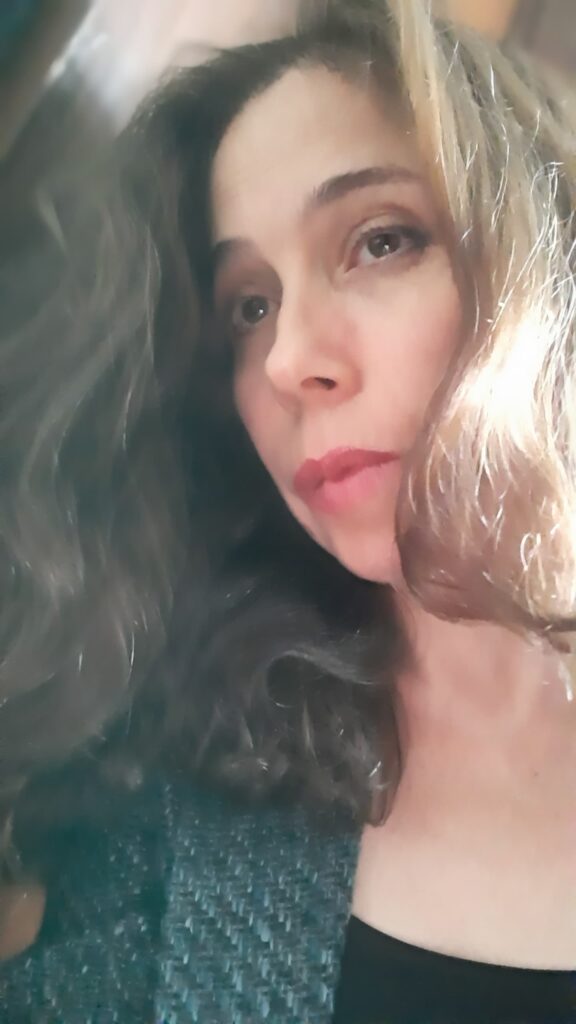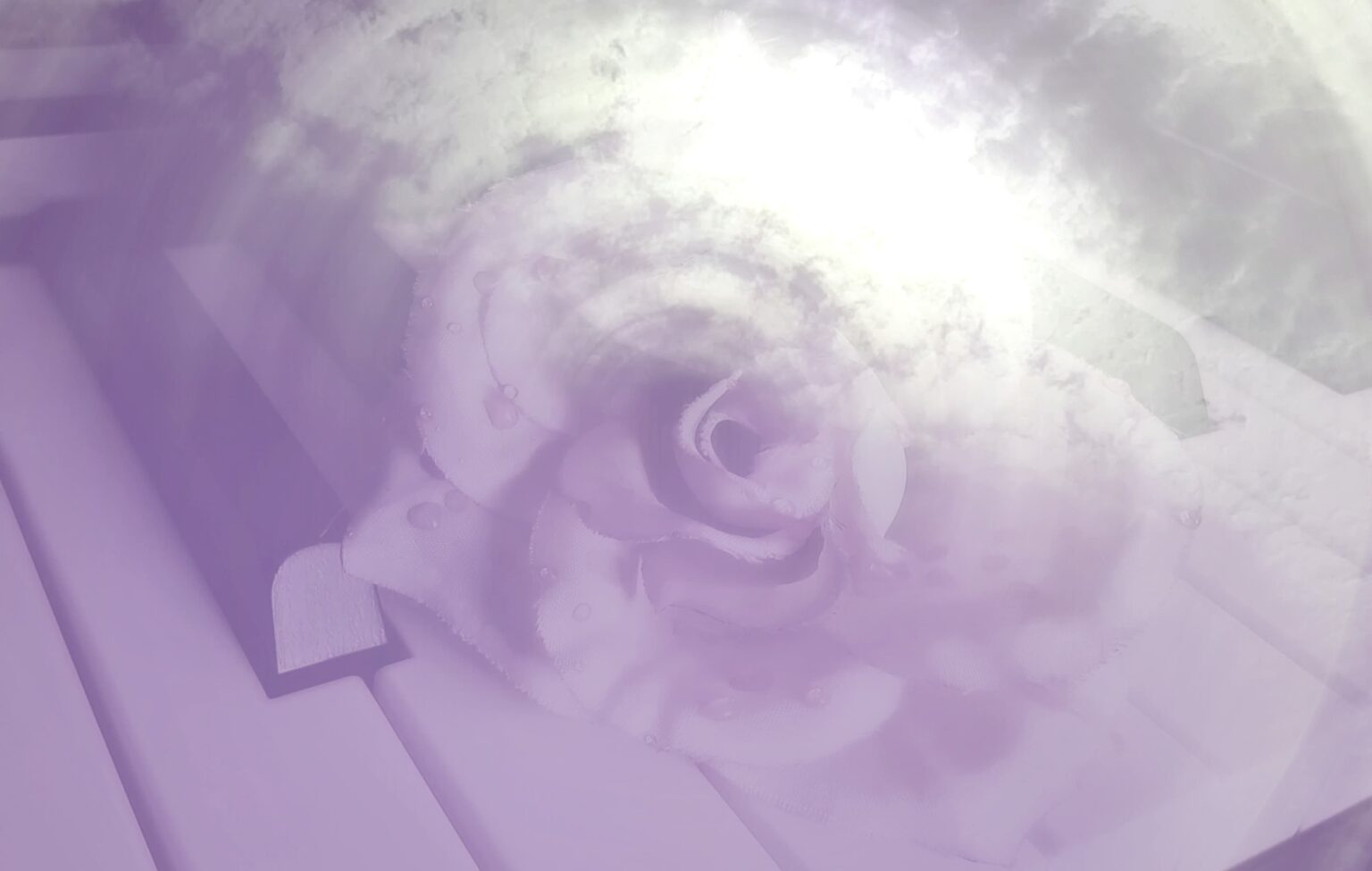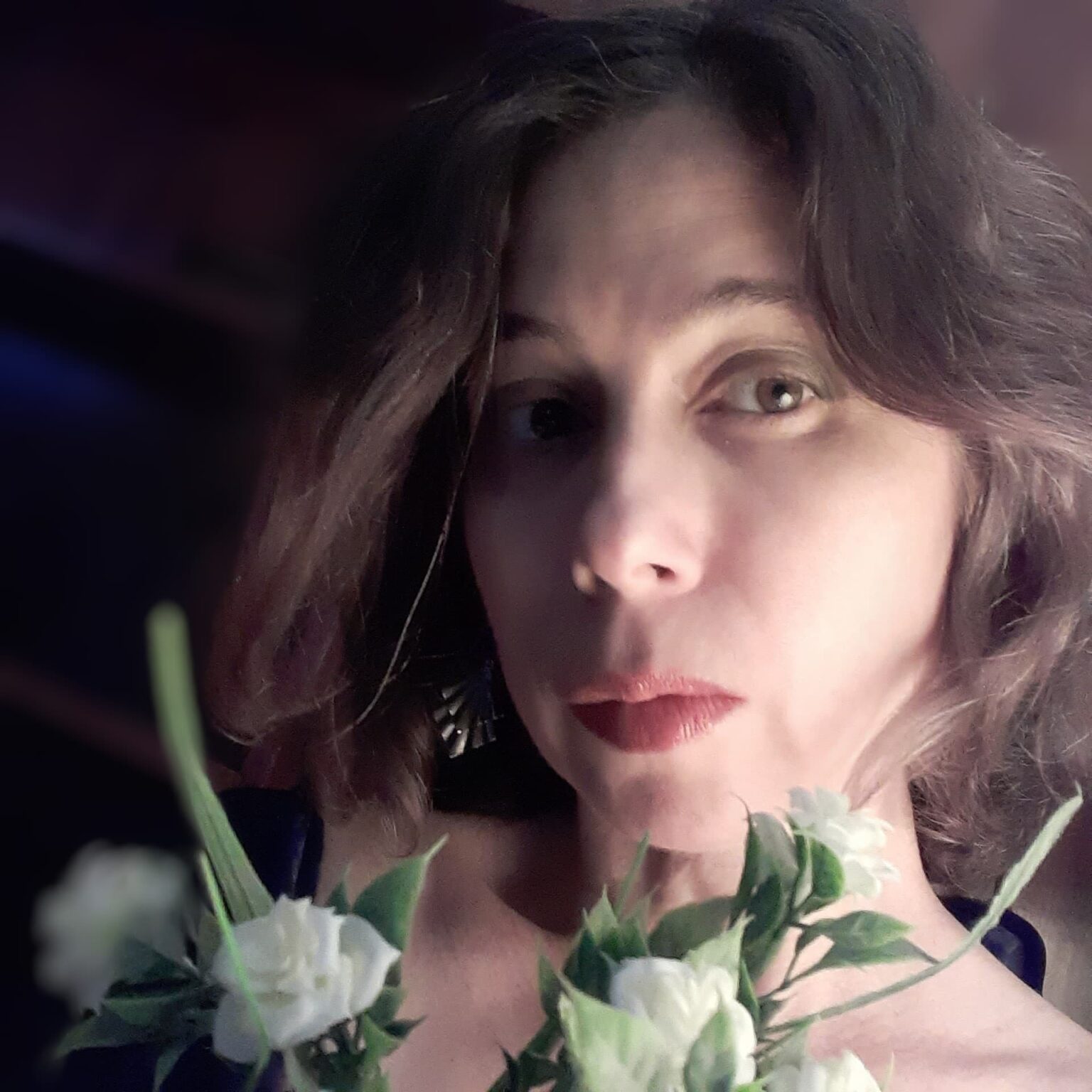🌸 Welcome to Lilyan’s Piano Stories. This is the musical universe of Lilyan Leyva, where minimalist clarity meets classical soul, creating melodies for introspection, healing, and cinematic contemplation. In this quiet corner of sound, music becomes memory, and each melody a thread in the tapestry of feeling. Here, the piano speaks in whispers — telling stories that words cannot hold. From blooming roses to lavender skies, this is a sanctuary of emotional resonance, where silence is sacred and every note is a reflection of soul. My music is produced with global standards, having been featured in Pandora’s editorial programming and reaching listeners in over 53 countries. Step into a world where music is not just heard — it’s felt, remembered, and lived.
Lilyan’s Piano Stories is a deeply evocative musical journey — a personal universe where emotion blooms through sound and silence. At its symbolic heart lie two emotional flowers: 🌹 the red rose, embodying intensity, love, and heartfelt expression; and 💜 the lavender, representing introspection, inner peace, and celestial inspiration — a vision born beneath a lavender sky during meditation.
This duality is the symbolic essence of Lilyan’s Piano Stories — a poetic language of contrast and harmony that flows through each composition. Petals of Silence is the first chapter where this emotional language fully blossoms, offering ten original piano works, each crafted as a solitary rose of spirit and feeling.
Every piece is a world of its own, telling a story that transcends language and invites the listener into a space of quiet reflection. From the enchanting Beyond Love, praised for its timeless beauty, to other profound works, Lilyan’s music blends classical finesse, minimalist clarity, and cinematic elegance.
Through these piano tales, Lilyan offers more than melodies — she offers soul narratives that evoke healing, serenity, and introspection. Each note becomes a silent journey, resonating in the heart and leaving behind a soft bloom of wonder.
My Musical Childhood
Did you take piano lessons at an early age?
LILYAN: I embarked on my piano journey at the tender age of 7, guided by my first book, “Teaching Little Fingers to Play,” which I still cherish. My musical education blossomed through private lessons, school classes, and continuous learning into adulthood. During those formative years, an old acoustic piano graced our home—a piano that wasn’t officially ours but became my faithful companion. It was on this instrument that I learned to translate raw emotion into music. Now, as a self-taught musician, I continue to explore the depths of expression through my compositions.
How did your passion for music develop?
LILYAN: My passion for music blossomed in the schoolyard and the quiet corners where melodies lingered in the air. I was drawn to the piano, where I found joy in playing songs by ear, especially those I held close to my heart. One piece that left an indelible mark on me was “Nostalgy” by Paul de Senneville and Olivier Toussaint, interpreted by Richard Clayderman. Its enchanting melody spoke of longing and remembrance, weaving a spell of sweet melancholy that resonated with my own sensibilities. Over time, this piece became more than just a composition to me—it became a companion in my musical journey, a source of inspiration, and a touchstone for my creative expression.
When the Music Faded
Why did you step away from the piano if you enjoyed it so much?
LILYAN: Back then, I often heard that music wasn’t a viable career, just a hobby. Over time, those voices shaped my decisions, and I began to drift away from the piano. The vibrant colors and the sounds that once filled my life gradually dimmed, until they faded completely. Life became more gray, more aligned with what society or others seemed to expect of me: to fit into a mold, to follow a predetermined path. I studied business administration, later pursued an MBA, and with each step, I moved further away from music. Being prone to migraines, often triggered by sound, may have been a contributing factor, but truthfully, it was the societal message that what I loved wasn’t “useful” or “practical” that truly drove me away. I thought I had left the piano behind forever. I convinced myself that it was over, that music had no place in my life anymore. But music never gave up on me. It found its way back into my life, as if it had been waiting patiently for the right moment to return. Looking back now, I can’t explain how I let the piano slip away for so many years—but I’m grateful that the music called me back when it did.
The Unexpected Return
How and when did you start composing music, and what inspired you?
LILYAN: Many years had passed since my fingers last danced across the piano keys. The loss of my cherished Pekingese dog created an emptiness that led me to seek solace in meditation. It was during these moments of deep reflection that I didn’t just imagine, but vividly saw with closed eyes, a breathtaking lavender sky. This wasn’t mere imagination; it was as if my inner sight unveiled a vortex of this mesmerizing hue. This profound visual experience, seen in the quiet darkness, rekindled my passion for the piano. One day, I found myself seated before the ivory keys, playing as if woven into the fabric of time. It wasn’t long before this reconnection with my inner world began to manifest in the form of music composition, a journey that continues to unfold to this day.
Is that why you feel music chose you?
LILYAN: Indeed, I believe music found me. Despite abandoning the piano, I often dreamt of pianos with silent, broken keys—a recurring nightmare. Since returning to music, those dreams have ceased. As a child, I wanted to venture into composition, but I didn’t start composing until this period in my maturity. I leaned more toward playing melodies by ear, savoring the ones that resonated with me. Now, I can’t envision a life without music, even as I recognize there’s still much to learn.
Silent Melodies: A journey of Healing and Inspiration
In the silence of loss, where the heart finds its echo, a pianist rediscovered the dance of fingers on ivory keys. The passing of a beloved Pekingese not only left a void but also opened a gateway to introspection. In the depths of meditation, a vision emerged—not just a figment of imagination, but a vivid, almost tangible experience of a lavender sky. This celestial vortex, with its mesmerizing hues, became a symbol of inner peace and a source of inspiration. As if guided by the unseen threads of time, the pianist returned to the instrument that once resonated with life’s symphony. Each note played was a step closer to healing, a melody woven into the fabric of the soul. This reconnection with the piano was not merely a return to a past passion but the beginning of a new journey in music composition. (This photo is the spiritual representation of my experience).
Composition Process: Silent Melodies
What time of the day do you find best for engaging with music?
LILYAN: I am drawn to music at any time, but the night holds a special magic for me. There’s a quiet intimacy that the darkness brings, wrapping everything in a veil of stillness. Playing the piano at night feels liberating; it becomes a moment beyond time, where past, present, and future converge into a seamless, universal resonance. The act of playing fills me with immense joy, connecting me not only to the music but to a profound sense of wholeness and freedom.
Could you describe your music composition process?
LILYAN: My creative process revolves around what I call Silent Melodies—these are melodies that seem to emerge from a place beyond this world, or perhaps from a deep part of my inner self. They appear unexpectedly, often when I least expect it, as if waiting for the right moment to reveal themselves. When they come, the music lingers in my mind, persistent, until I fully capture it on the piano. It’s an intuitive and almost magical experience, where the music guides me, flowing naturally without conscious effort. Each time feels like stepping into a unique and indescribable connection with sound.
Is it true that you can see the colors of music?
LILYAN: Yes. When a melody is truly new and about to be born, I experience something extraordinary. Several soft, glowing flashes appear physically, just above the keys—in the exact space where the sheet music lies, right in front of my eyes. It’s brief, like a window opening to a sliver of sky for a fraction of a second. The colors—lavender, indigo, rose, blue—manifest especially in the most melancholic passages, or when I press the keys with deeper emotion. I now know this is a form of synesthesia (likely chromesthesia), where sound and color blend into one moment. At first, it surprised me. But as I composed more melodies and this phenomenon continued to happen, I embraced it as part of my creative soul. Each color marks a musical birth, a moment of light revealing its emotion before fading. It’s how I know a piece is alive.
Style and Musical Genre
What are you musical influences?
LILYAN: Growing up, I was enchanted by classical music and revered composers like Chopin, Beethoven, Rachmaninoff, and Erik Satie. I also found a connection with the works of Paul de Senneville and Oliver Toussaint. Later, John Barry, Yanni, and now Ludovico Einaudi, Ennio Morricone, David Lanz, Hans Zimmer, Yiruma, Yann Tiersen and others have been significant inspirations.
What is your musical style or musical genre?
LILYAN: My heart belongs to classical piano music, film soundtracks, and the works of contemporary minimalist and new age composers. I have a special fondness for the violin and cello within these genres. My style could be described as contemporary piano with a minimalist touch, inherently romantic, evoking true feelings and deep emotions. It’s music that invites introspection and daydreaming, timeless and in harmony with nature, offering relaxation. Defining the essence of my music is a challenge, but I believe my melodies are evocative, carrying a nostalgic quality. They are stories born from silence, whispered from my inner world, becoming a bridge between the tangible and the ethereal, inviting listeners on a journey of introspection, healing and dreams.
What are your favorite songs in classical music and contemporary piano composers?
LILYAN: “Nostalgy”, the first melody I fell in love with (performed by Richard Clayderman), by Paul de Senneville and Oliver Toussaint and Oliver Toussaint’s “Ballade pour Adeline”. Among classical composers, Beethoven’s “Moonlight Sonata” will always hold a special place in my heart. Chopin’s “Nocturne Op. 9 No.2” and “Nocturne in Bb Op.9 minor No. 1” are also favorites, along with Tommaso Albinoni’s “Adagio” in G minor, Bach’s “Air” on the G string (piano version), Satie’s “Gymnopédie No. 1-5”, Rachmaninoff’s “Rhapsody on a Theme of Paganini”, Handel/Halvorsen’s “Passacaglia”, and John Barry’s theme from the movie “Somewhere in Time”, among others. In the realm of contemporary piano music, I am moved by Ennio Morricone’s “Le Vent, Le Cri” and «Chi Mai», Ludovico Einaudi’s “Nuvole Bianche”, Yiruma’s “Kiss The Rain” and “River Flows in You”, Procol Harum’s “A Whiter Shade of Pale” (piano version), and David Lanz’s “Cristofori’s Dream”. Yanni’s “Reflections of Passion”, “Until The Last Moment”, and “One Man’s Dream” are also among my favorites.
Year in Review, 2025
🌙 YEAR IN REVIEW – LILYAN’S PIANO STORIES
New Age Piano with a Classical Soul
This year marked the beginning of a journey I never planned. After many years away from the piano, a moment of introspection led me to meditation and, with my eyes closed, I saw a lavender sky. That quiet vision opened a path back to music and gave life to Lilyan’s Piano Stories: The Garden of Silent Melodies, a space where emotions bloom through piano and where each melody aims to accompany, soothe, and bring clarity to those who work, study, or simply need a moment to breathe.
Over these months, my compositions were featured in 29 editorial playlists on Pandora, including stations such as New Age Solo Piano, Instrumental Chill, Classical Romance, Meditation: Piano, Solo Piano, Spa, New Age Instrumental, and Sleep: Classical. My music reached 54 countries, with special presence in the United States, Peru, Panama, Germany, Mexico, Japan, the United Kingdom, Spain, and France. Beyond Love became my most streamed piece worldwide, and one of the most meaningful surprises was discovering that Pandora placed my music in algorithmic stations of artists who have shaped my sensitivity: Yiruma, Secret Garden, David Lanz, George Winston, Helen Jane Long, Enya, Yanni and Ludovico Einaudi, among others.
I close this cycle with gratitude. To Pandora for opening so many doors. To every country that gave a home to my piano stories. To everyone who found in my melodies a space to relax, focus, heal, or simply breathe. This garden is just beginning to bloom. In 2026, new compositions will arrive (some intense, others soft, all honest), created to accompany you wherever you need them most.
Thank you for being part of Lilyan’s Piano Stories!
The best is yet to come.✨





